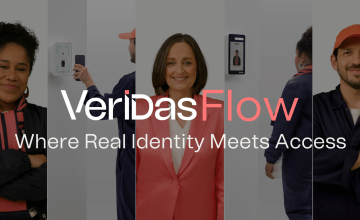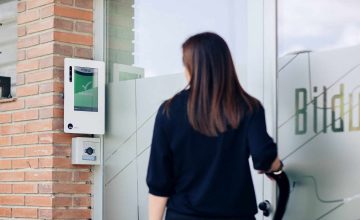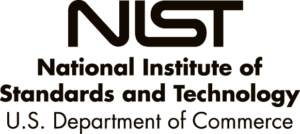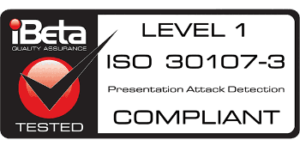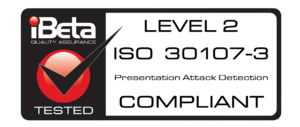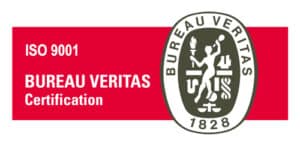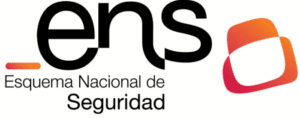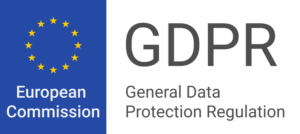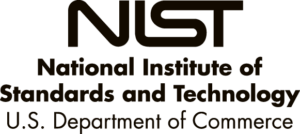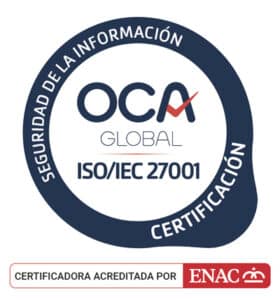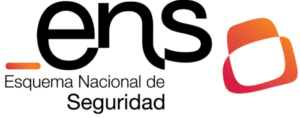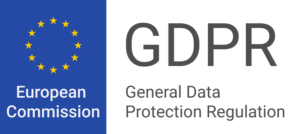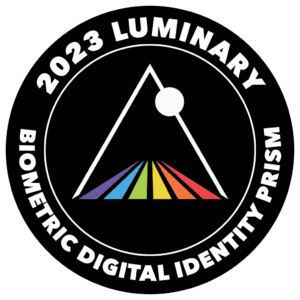Introducción
La crisis sanitaria y económica generada por la Covid-19 nos enfrenta a un nuevo reto: la seguridad de la tramitación de las bajas laborales en remoto de cientos de millones de trabajadores debido a la explosión de casos por la variante Ómicron.
La verificación biométrica de la identidad real de las personas es una herramienta clave para aportar la certeza que cada uno de estos trámites sanitarios requiere.
En este artículo, proponemos como caso de uso, un sistema de verificación biométrica de la identidad real del ciudadano en remoto para ayudar a gestionar las cientos de miles de bajas laborales simultáneas que ya se están dando en muchos países del mundo.
Presente y futuro de las bajas laborales por Covid
La crisis sociosanitaria y económica que está generando la pandemia del SARS-CoV-2 nos está enfrentando a problemáticas jamás vistas anteriormente. En cada estadio de la pandemia surgen necesidades sociales nuevas, como ya lo vivimos con el pasaporte Covid y su uso y autenticidad como medida para atajar los contagios.
Ahora, con esta nueva ola, dominada por la variante Ómicron, se está vislumbrando una nueva crisis que afecta tanto al sistema sanitario, como a los ciudadanos, las empresas y los Sistemas Sanitarios. El gran número de bajas por contagio de Covid-19 o por contacto estrecho está ocasionando problemas importantes en los centros de salud y hospitales para tratar a miles de enfermos. Pero también lo sufren las plantillas de las empresas, con un importante número de personas de baja, confinadas por contacto estrecho o cuidando a familiares positivos.
Este horizonte está creando situaciones muy complejas de gestionar por su alto volumen de personas enfermas, a lo que se le suma el fraude que se puede generar debido a que muchas regiones están empezando a dar por válidos resultados positivos en auto-tests de antígenos.
Problemática e inseguridad en la identidad y en la solicitud
Por lo general, para tramitar la baja laboral de una persona por Covid-19, ésta debe acudir a su médico para realizarse una prueba PCR o un test de antígenos. Una vez dado positivo, el médico genera la baja laboral que servirá como justificante al empleado ante su empresa. Y ésta, a su vez, deberá tramitar la baja temporal del trabajador con la administración del país.
Pero, los recientes cambios en el rastreo de la pandemia en Estados Unidos, Reino Unido o Italia, están obligando al personal sanitario a generar bajas en remoto, sin haber visto al paciente y sin ni siquiera ver el test de antígenos positivo.
Esto nos lleva a un escenario de inseguridad de la veracidad de la solicitud e incluso de la identidad de las personas que están solicitando una baja por positivo en Covid-19. ¿Cómo poder reducir esta inseguridad y facilitar el trabajo a sanitarios, empresas, administraciones públicas sanitarias y a los propios enfermos?
Identidad real y biometría: herramientas clave
En este nuevo proceso remoto para tramitar la baja, la identidad real de las personas juega un papel fundamental y disuasorio ante posibles fraudes sanitarios.
Estamos hablando de que millones de personas durante los próximos meses se van a enfrentar a esta situación, y miles de sanitarios, que son expertos en salud y no en identificación de una persona en remoto, van a dedicar una gran parte de su tiempo a validar a ciegas enfermedades y bajas laborales.
Por eso, una verificación biométrica precisa y automatizada (revisable) de la identidad real de las personas, asociada a su documento de identidad, es una herramienta clave para dar certeza a cada uno de estos cientos de miles de trámites sanitarios que se van a realizar cada día en los próximos meses.
Video-identificación para tramitar bajas laborales
En España, por ejemplo, la Administración Pública dispone de herramientas para realizar gestiones o asistencia remota con la ciudadanía con un nivel de seguridad elevado. La Resolución del 25 de mayo de 2021 por parte de la Secretaría de Estado de la Seguridad Social y Pensiones habilita a los españoles a realizar trámites y actuaciones a través de canales telefónicos y telemáticos gracias a los sistemas de video-identificación a distancia y sistemas de identificación biométrica. Esto significa que ya existen las herramientas necesarias para realizar una comunicación en remoto segura entre la Administración, en este caso un sanitario o la Seguridad Social, y los ciudadanos.
La ciudadanía ya tiene lo necesario para poder utilizar esta tecnología que le simplificaría su relación con la Administración: un ordenador, tablet o móvil con una cámara y un micrófono, conexión a internet y su DNI u otro documento de identidad oficial. Así de sencillo. Y a todo este proceso, se le puede añadir una capa más de seguridad, con la revisión manual de la video-identificación por parte de una persona a posteriori. Se explica la sencillez del proceso en el siguiente gráfico.
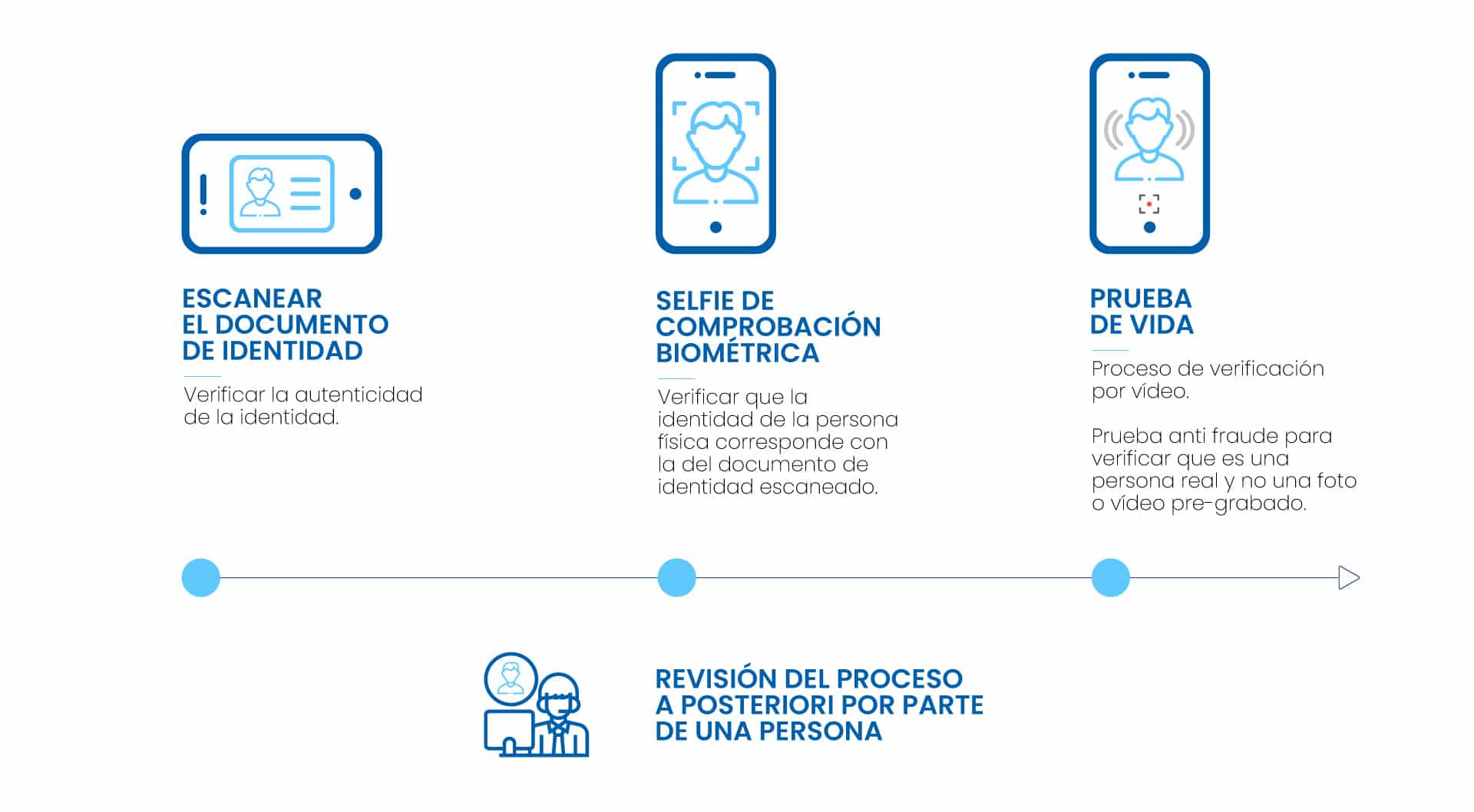
Principales ventajas
· Seguridad en la verificación de la identidad. A través de la video-identificación biométrica se alcanza un nivel igual o superior a una identificación presencial de un ciudadano por parte de un sanitario. Estamos seguros de que la persona que solicita la baja es quien dice ser detectando cualquier acción anti-fraude en este proceso.
· Seguridad sanitaria. Se reduce notablemente el contacto de miles de profesionales sanitarios con millones de personas infectadas por Covid-19, con lo que se reduciría la posibilidad de enfermar por parte de los médicos o enfermeros y sus consecuentes bajas laborales.
· Optimización de recursos en la atención primaria. El personal sanitario reduciría el tiempo dedicado a cada paciente positivo por Covid-19 para la verificación de su identidad y de su prueba positiva.
· Comodidad para la persona enferma. Millones de personas no estarían obligados a trasladarse a su centro de salud para realizar este trámite, y podrían realizar esta gestión telemática cuando lo necesiten, sin sufrir los colapsos telefónicos diarios a los que está sometida la atención primaria.
· Privacidad del ciudadano. No se guarda ningún dato del ciudadano en los servidores del proveedor.
· Rápida, global y accesible. El sistema de video-identificación ya se podría implementar en los departamentos de Salud de las regiones españolas y en otros países. Además, los requerimientos que se exigen al ciudadano son accesibles: un smartphone u ordenador con cámara, micrófono y conexión a internet, y su documento de identidad.
· Transparencia con las empresas. Esta solución es transparente para las empresas en las que trabajan los ciudadanos ya que podrían recibir de manera automática la baja emitida por el personal sanitario. además, sirve como elemento disuasorio del absentismo laboral, que ha crecido hasta más de un 7% en 2021.
La solución para tramitar las bajas laborales por Covid-19 (u otras enfermedades) podría centralizarse a través de un portal digital en el que el ciudadano realiza una video-identificación completa (validación de documento, comprobación biométrica mediante selfie y prueba de vida) y enseña su auto-test positivo. Después, de manera manual, un persona, podría validar si se estima necesario la totalidad del proceso, y accedería a tramitar la baja laboral.
Desde Veridas, hemos diseñado un proceso de video-identificación biométrica que, como mínimo, tenga la seguridad equivalente a la presencial (según el Reglamento eIDAS), además de contar con la acreditación de una tercera entidad, como DEKRA.
Muchos Gobiernos están incorporando normativa para regular estos procesos, y aportar seguridad, por ejemplo, el Gobierno de España, establece las siguientes reglas de desarrollo de la video-identificación y autenticación biométrica en la Guía de Seguridad del Centro Criptológico Nacional, y con las que Veridas está alineado y cumple al 100% :
-
- Evaluación por el NIST (National Institute of Standards and Technology), la institución independiente de referencia en el campo de la biometría de Estados Unidos.
- Inclusión de métodos anti-fraude.
- Método anti-fraude en el documento.
- Revisión humana a posteriori.
- Integridad en el proceso en tiempo y dispositivo.
- Identificación en tiempo real.
- Scoring biométrico facial de validación.
- Protocolos de seguridad de comunicación.
Conclusiones
Los sistemas de verificación biométrica por video-identificación darían certeza en las millones de tramitaciones de bajas laborales por Covid-19 que ya están sufriendo decenas de países.
Ante una avalancha sanitaria y administrativa jamás vista, es esencial poder gestionar todos los trámites de bajas laborales por Covid-19 de manera remota y con la máxima certeza en cada acción, ya que están en juego los sistemas sanitarios y la economía de los países y las empresas.
Para dotar de la máxima certeza en la veracidad de la identidad del individuo que solicita la baja, la herramienta clave es la video-identificación (validación de documento, comprobación biométrica mediante selfie y prueba de vida) y muestra del auto-test positivo.
En definitiva, esta crisis sanitaria pone de manifiesto la necesidad de dotarnos de mejores herramientas para relacionarnos, de manera segura y remota, con la Administración. El COVID nos urge ahora, pero la realidad es que contar con este tipo de tecnología sería un aliado para la gestión de los servicios sanitarios en el día a día, e indudablemente un apoyo inestimable en momentos de crisis como los actuales.
Es el momento de mejorar las cosas y en Veridas estamos preparados. ¿Hablamos?




